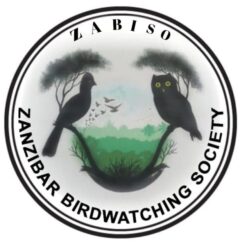Introduction
Together with, the Netherlands Institute for Sea Research (NIOZ) & University of Groningen (RUG) and International Wader Study group (IWGS), ZABISO plan a five-year Shorebirds Survey of the Zanzibar Archipelago.
The last survey (1998) organised by the IWGS in cooperation with the Commission for Natural Resources on Zanzibar and the Department of Environment on Zanzibar. The primary purpose was to estimate the numbers of shorebirds wintering on the Zanzibar, archipelago, with particular attention to the Crab-Plover (Dromas ardeola), and to count breeding colonies of seabirds at Latham island.
The results show that large numbers of waders use the mangrove forests, intertidal flats and rocky cliffs of the archipelago and therefore can be considered as an area of significant importance to the West Asia – East African Flyway.
The wintering numbers of Crab Plover could well be 20% of the world population. For several species, the main areas were found to meet the RAMSAR criteria. The primary threat was found to be habitat destruction, mainly caused by mangrove cutting and today we can add waste-pollution. Not only the region is an essential area for migrating birds but also for breeding seabirds.
Situated sixty-five kilometres South-East of Unguja (commonly known as Zanzibar) is Latham Island. The unique habitat of the uninhabited island is critical internationally for the only major seabird nesting site in East Africa. It supports about 3 700 pairs of Masked Booby, 320 pairs of Swift Tern, 4 400 pairs of Sooty Tern and 4 000 pairs of Common Noddy. It is also visited by migrating birds although in small numbers. Here there are three major threats: poaching of birds, habitat destruction, illegal fishing.
In the end, counting and monitoring should provide the knowledge on bird numbers and their fluctuations, necessary as a step towards birds and wetland protection on these islands.
- Training local people
- Annual mid-summer survey of the most critical areas.
- Goal: assess the maximum number of birds in the area
- Multiple surveys per year of the most critical areas.
- Goal: get an idea of the turnover of birds in the area.
- Colour-ringing of selected birds.
- Goal: assess site fidelity, apparent survival, connectivity between areas.
- Tracking of birds:
- Goal: gain a deep understanding of local, regional and global movements of birds and their connection with other areas.
- Publication results
